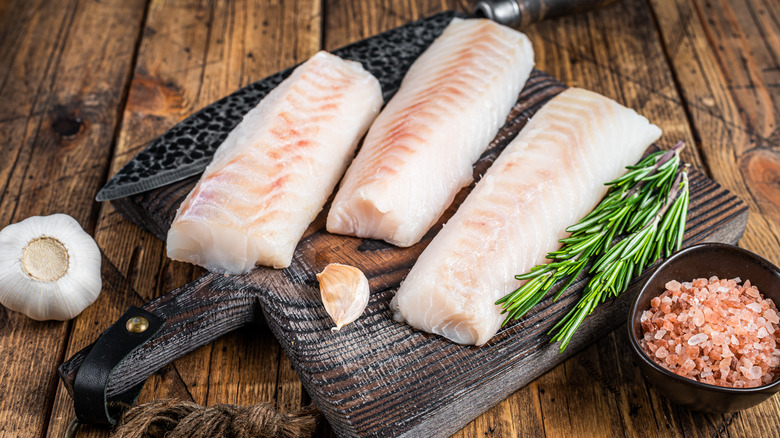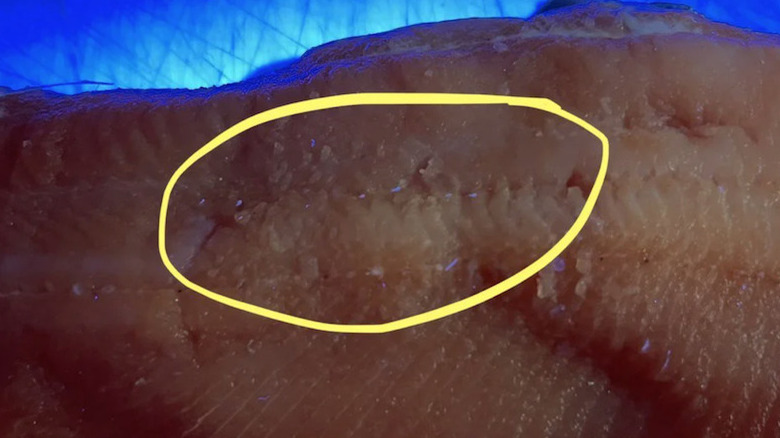Why You Should Start Using UV Light To Debone Fish
When you're eating a perfectly cooked piece of fish, the last thing you want to crunch into is a bone — it ruins the entire dining experience. While frozen fish typically comes already deboned, as Real Simple reports, any other type of fish that you may buy will likely need to be deboned. And, even if the fish states that it has been deboned, you could still encounter the teeny tiny bone fragments that are almost invisible to the naked eye and are typically only discovered when you take a bite and detect a hard fragment amidst the flaky fish.
Until now, one of the most common ways of dealing with those tiny bones was to remove them with a pair of fish tweezers (or, if you're in a pinch and don't have those, a pair of clean cosmetic tweezers). However, this requires you to examine every single inch of your fish fillets, and for white fish, those bones often blend right into the flesh and are nearly impossible to see. Luckily, there's an interesting new way of finding those tiny bones in your fish, and it simply involves looking at the protein in a different light — literally.
Reddit user Picturesonback shared their unusual technique, explaining in the comment section that "I was at my wits end with the CONSTANT breaking bones in the rainbow trout. Then I remembered that my ultraviolet flashlights are like magic wands, and tend to fluoresce certain hard organic materials (bones, shellfish, etc.)."
What Reddit users are saying
Reddit user Picturesonback shared an image that featured a close-up of some type of fish filet with a glowing blue light visible in the background. As he explained, he had shone his ultraviolet flashlight on a piece of trout and photographed the results. While the fish looked as you might expect a piece of the raw protein to look, there was something unusual about how the tiny bone fragments within the fish appeared under the UV light — they lit up, glowing like tiny neon bits amidst the rest of the fish filet, consequently becoming very easy to spot and thus remove.
The simple post received 92 comments from users who couldn't get enough of the new hack, with one user even calling it "one of the best food hacks I've seen" and another adding "that's genius." It seems the hack is also a bit more versatile than you might think — one commenter wrote that the ultraviolet light hack also works when it comes to finding shells in lobster and crab meat.
However, it appears not everyone was convinced. Reddit user rSato76y3 wrote, "Sushi chef here. Just run your fingers over them, and you'll feel all of them and just dig out the ones that break. No need to waste money on something you can easily do for free."

